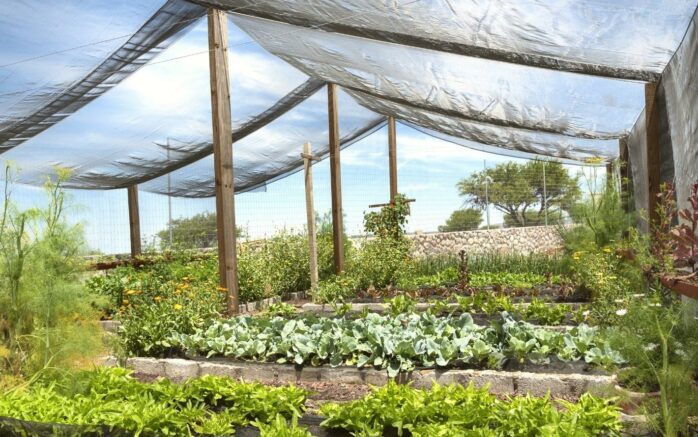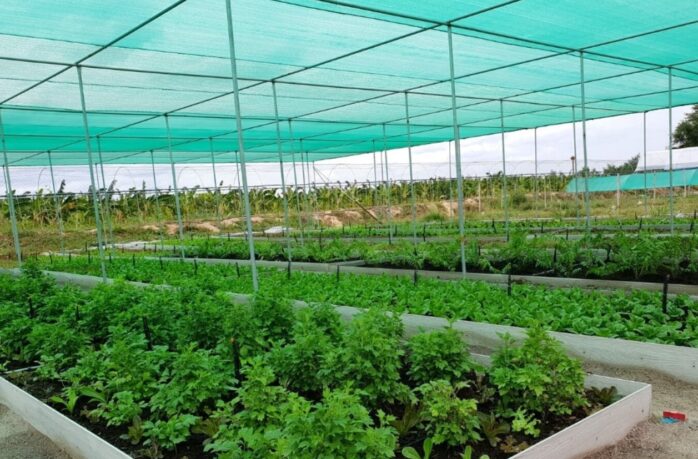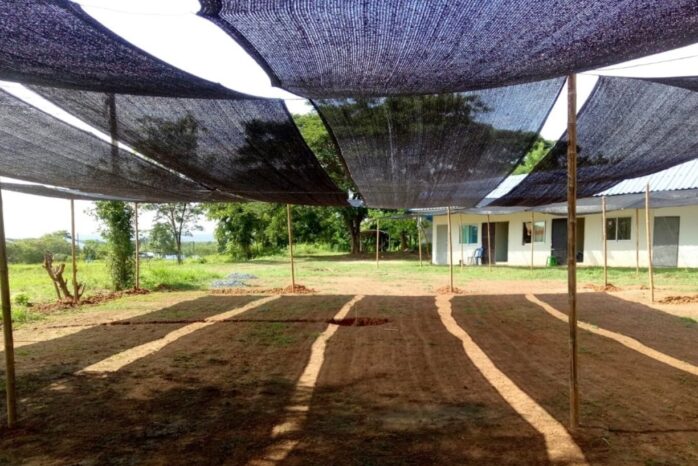
As the new gardening season of 2024 rolls around, everyone’s buzzing about how to keep their beloved green buddies safe, especially with the crazy weather lately. Among all the cool tricks out there, shade cloth is getting lots of love.
This nifty fabric is a game-changer for protecting plants from too much sun and keeping them happy and productive.
So, let’s dive into the wonderful world of shade cloth, learn why it’s so awesome, and figure out the best times to use it during the year.
Getting to Know Shade Cloth and Why It’s a Big Deal

Shade cloth is this super handy fabric that’s either woven or knitted, and it’s all about giving protection to both delicate and regular plants from the intense sun.
It’s like sunglasses for your garden, filtering out the harsh rays and keeping things cool for your leafy friends.
This is super important because too much sun can cause leaves to burn, plants to get way too thirsty, and even stop them from growing fruits properly.
If you happen to have a garden full of delicate plants such as orchids, check out shade cloth for orchids and discover all types of shades for any plant out there.
But shade cloth isn’t just about keeping things cool. It also helps save water by keeping the ground moist for longer and can even act like a guard against pesky critters and birds that want a piece of your plants.
The Science-y Stuff Behind Shade Cloth
What makes shade cloth so cool (pun intended) is how it deals with sunlight. It can either bounce back or soak up some of that solar energy, so less heat gets to your plants.
The protection level depends on how dense the cloth is, which can range from a light shield (about 15-30% shade) to a super-strong one (up to 90% shade).
Picking the right one depends on what your plants need, how big they are, and the weather in your area.
Plants need light to do their thing—photosynthesis, which is how they make their food. But too much light can mess this up, causing what’s called photoinhibition, where plants can’t produce as much as they should.
Shade cloth helps spread out the light more evenly, making sure plants get just the right amount for top-notch health and growth.
A Season-by-Season Guide to Using Shade Cloth

Using shade cloth isn’t a one-and-done deal. It’s all about tuning in to the seasons and knowing what your garden needs.
Springtime
Spring is when the growing season kicks off, with longer days and warmer temps. Little plants and new seedlings are especially sensitive to the bright sun and changing temps.
A lighter shade cloth (15-30% shade) during this time can give them the cozy spot they need to grow strong and set the stage for a lush garden.
Summertime
Summer can be tough with its intense heat and sun. This is when shade cloth really shines, especially in super hot spots. A thicker shade cloth (40-70% shade) can save the day for plants that don’t like the heat, like lettuces and some flowers.
Keep an eye on the weather and tweak the shade as needed to make sure your plants are getting enough light without overheating.
Late Summer to Early Fall
As summer winds down and fall approaches, the sun’s rays start to chill out a bit. This is a good time to ease up on the shading, helping plants adjust to the changing light and keep growing strong.
For plants like tomatoes and peppers, less shade can help them ripen and taste even better.
Fall
Even as the season winds down, shade cloth can still come in handy, especially to stretch out the harvest time for some crops.
A lighter shade can keep plants safe from early frosts while still letting in enough light for photosynthesis. This can be great for keeping warm-season plants going a bit longer and protecting delicate perennials.
Material and Durability Considerations

Diving into the world of shade cloth, it’s not just about throwing up any old fabric and calling it a day. The real magic happens when we pick the right warrior for the battle – I’m talking about the material and durability of shade cloth.
This isn’t a one-size-fits-all deal; we’ve got options like the sturdy polyethylene that laughs in the face of UV rays or the sleek aluminum shades that not only block out the sun but also add a cool factor to your green haven.
And let’s talk longevity – because what’s the point of suiting up your garden if the gear can’t stand the test of time and weather? We’re after those MVPs that can hang tough season after season, shielding our leafy friends from those harsh solar beams without throwing in the towel.
So, when you’re out there scouting for the perfect shade cloth, think about this: you want a champion that’s as tough as your love for gardening, ready to go the distance and keep your garden oasis thriving.
Top Tips for Using Shade Cloth Like a Pro
Getting the most out of shade cloth isn’t just about when you use it but also how you use it. Making sure there’s plenty of air flow is key; you want the cloth set up so air can move freely around your plants, keeping things from getting too hot or humid.
The structure holding up the shade cloth should be solid but flexible, ready for any weather and easy to adjust.
Also, think about how shading might change how much water your plants need. With less evaporation under the cloth, you might need to tweak your watering routine.
Keeping an eye on the weather and how your plants are doing will help you make the right calls and get the most out of your shade cloth.
Wrapping It Up

As we jump into the 2024 gardening season, using shade cloth smartly is a key move for keeping your garden thriving.
By getting the hang of what your plants need and staying in step with the changing seasons, you can use shade cloth to create the perfect spot for your plants to flourish.
Whether you’re shielding delicate seedlings in spring or guarding against the summer’s heat, using shade cloth thoughtfully can make a huge difference in how well your garden does.
So, let’s keep our green thumbs tuned to our garden’s needs and make the most of every tool we’ve got, including shade cloth, to help our gardens grow.
If you need high-quality shade cloth, Qibang Netting stands out as a trusted supplier.
They are experts in the field and can guide you in making the best choice for your needs.






